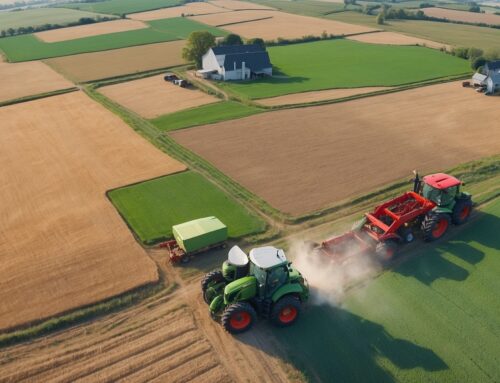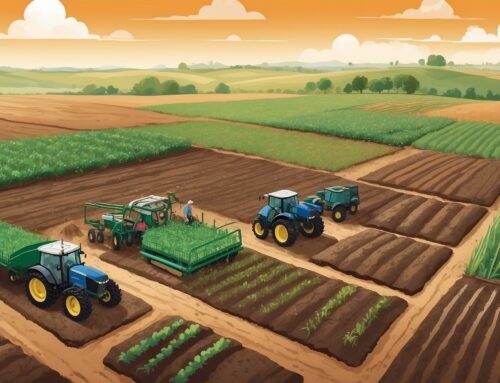Howdy, fellow farmers! Remember when “connectivity” just meant if your ol’ tractor would start up in the morning or if you could get through a rainstorm without the truck getting stuck in the mud? Well, times are changing, and these days, connectivity is more about keeping your farm tech working together in real-time, thanks to 5G. That’s right—5G isn’t just for teenagers streaming videos in the city. This lightning-fast network is poised to make a massive difference right here on the farm.
5G is the next big step in bringing precision agriculture and IoT tools to their full potential. If you think IoT is impressive now, wait until you see what happens when everything—from soil moisture sensors to automated tractors—starts running on 5G. Today, let’s take a closer look at how 5G is going to supercharge your farm and turn it into a futuristic powerhouse.
What’s the Deal with 5G?
Okay, so maybe you’re wondering, “Why do I need another ‘G’ when I can barely get a bar on my phone out in the backfield?” Fair question! 5G is the next generation of wireless technology, and it’s faster, more reliable, and has lower latency than anything we’ve had before. Think of it like this: it’s the difference between driving a trusty ol’ pickup from the 80s versus a brand-new sports car—both can get you where you need to go, but one does it way faster, with a lot more control.
In practical terms, 5G means faster communication between all those smart devices you’ve been hearing about. It means that your sensors, cameras, drones, tractors, and even the weather station on your barn will talk to each other instantly. And when everything’s talking in real time? Well, that’s when the real magic happens.

Faster, Smarter Farming
Here’s the deal: IoT (Internet of Things) devices are already helping us do amazing things on the farm—monitoring soil moisture, tracking weather patterns, and even driving our tractors for us. But with 5G, all of this can happen even faster and more reliably. Imagine getting instant alerts on your phone the moment one of your sensors shows that the soil’s a bit too dry, or having your drone send you HD footage of the back forty without any lag. That’s the power of 5G.
Latency—or, as I like to call it, “how long you have to twiddle your thumbs waiting for tech to catch up”—is almost nonexistent with 5G. This means that when your sensors say “It’s time to water,” your automated irrigation system can jump into action immediately. No delay, no fuss. And you can keep an eye on things from your smartphone, even if you’re miles away, running errands or—more realistically—trying to get that stubborn heifer back in the corral.
More Data, Better Decisions
5G doesn’t just mean things happen faster. It also means you can collect and process way more data than before. And as every farmer knows, the more you know, the better decisions you can make. With 5G, your farm tech isn’t limited by bandwidth, meaning that high-definition drone footage, real-time soil data, and even livestock tracking can all be streamed and analyzed without a hitch.
Imagine being able to see your entire field—every row, every plant, every single square inch—all on your tablet, updated in real-time, while your self-driving tractor does its thing. And if there’s an issue, like a patch of crops that’s looking stressed or an area that’s getting too much water, you’ll know about it immediately. It’s like having eyes and ears all over the farm, 24/7, without ever needing to leave the comfort of your pickup truck.
Bringing Precision to Livestock
Now, let’s not forget our four-legged friends. Livestock monitoring gets a serious boost from 5G, too. We’re talking real-time tracking of health indicators, grazing patterns, and even location tracking (because there’s always that one cow that decides the neighbor’s field looks better). With sensors and smart collars, you’ll get instant updates on each animal’s wellbeing, and if something’s wrong, you’ll know about it right away—before it becomes a serious problem.
The real-time data can help you monitor for early signs of health issues, keep an eye on calving, and ensure everyone is where they’re supposed to be. It’s like having an extra ranch hand that doesn’t need a lunch break or a day off.
No More Dead Zones (We Hope!)
One of the best things about 5G is the promise of better coverage. We all know the frustration of dead zones—like when you’re trying to make a call or check on your irrigation system, but you have to stand on one foot in the back corner of the barn to get a signal. With 5G, those dead zones should become fewer and farther between, meaning more reliable access to your tech, no matter where you are on the farm.
Now, I’m not saying we’re completely done with spotty coverage, especially if you’re in some really remote areas—but with 5G infrastructure expanding, it’s going to be a whole lot better than the days of waving your phone in the air trying to catch a signal.
The Future Is Now
5G is set to transform farming in a way that’s exciting, practical, and—let’s be honest—pretty darn cool. From real-time soil monitoring to automated machinery that works more efficiently than ever, the possibilities are endless. It’s the kind of stuff that makes me think maybe I should keep my grandkid’s toy spaceship around the barn—after all, with everything getting so futuristic, it seems fitting!
So, here’s to a future of faster, smarter, and more connected farming. With 5G, we’re not just keeping up with the times—we’re leading the charge, bringing the latest tech to the fields that feed the world. And if that means a little less time worrying about whether that backfield is getting enough water, and a little more time relaxing with a cup of coffee, well, I’ll take it. Cheers, and happy growing, y’all!





